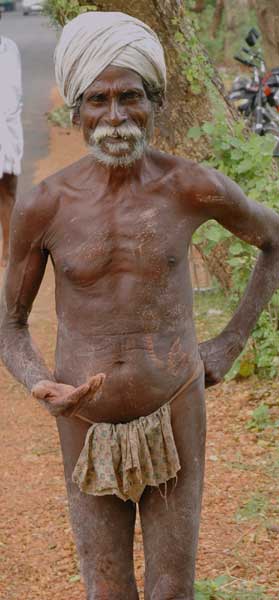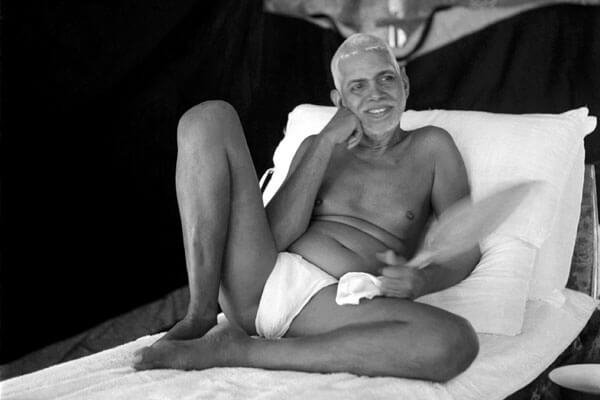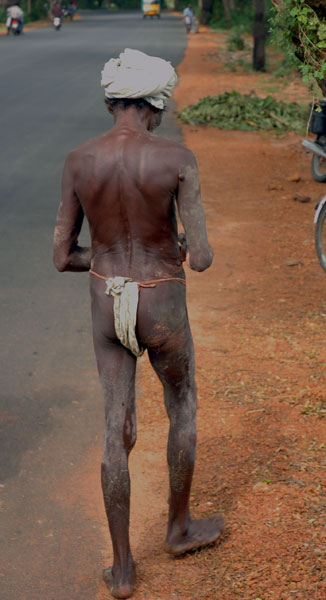It is a loin cloth passed between the legs and held by a string at the waist, just enough to cover the private parts. The remainder of the cloth acts as a curtain. Kaupina is a distinctly Indian form of clothing from ancient times.
Even today (2006) one can come across priests, fishermen, craftsmen, laborers, tribals, and ascetics wearing only the kaupina. Even women (during their menstrual cycles) used to wear kaupina. People who wore other attires (like dhoti or sari ) also wore kaupina as an undergarment. But its use has decreased after the arrival of machine-made undergarments.

Kaupinam in Indian Culture
Kaupinam features often in Indian literature.
Sri Shankaracharya has written a poem containing five verses on praising the Kaupinam called Kaupina Panchakam
. It is considered to be one of the highest Vedantic text of dispassion for the Sadhaks.
Kaupina is the attire of Lord Shiva, and sadhus who worship him wear the kaupina as the sole clothing as they beg or meditate.
In the recent times, Bhagavan Ramana Maharshi, a great Mahatma, used only a Kaupina as he walked around Arunachala hills in Thiruvannamala.
A part of the Hindu initiation ceremony involves teaching the boys how to wear the kaupina.
You will also see many drawings and temple sculptures with people wearing just a kaupinam.


As part of the History
Many illustrations of India drawn by visiting Europeans in 18th and 19th centuries feature men working in a kaupina — either by choice or out of poverty. Many medieval poets and saints are also described as “clad in kaupina”. Kaupina aka Kaupeena, Kaupinam.